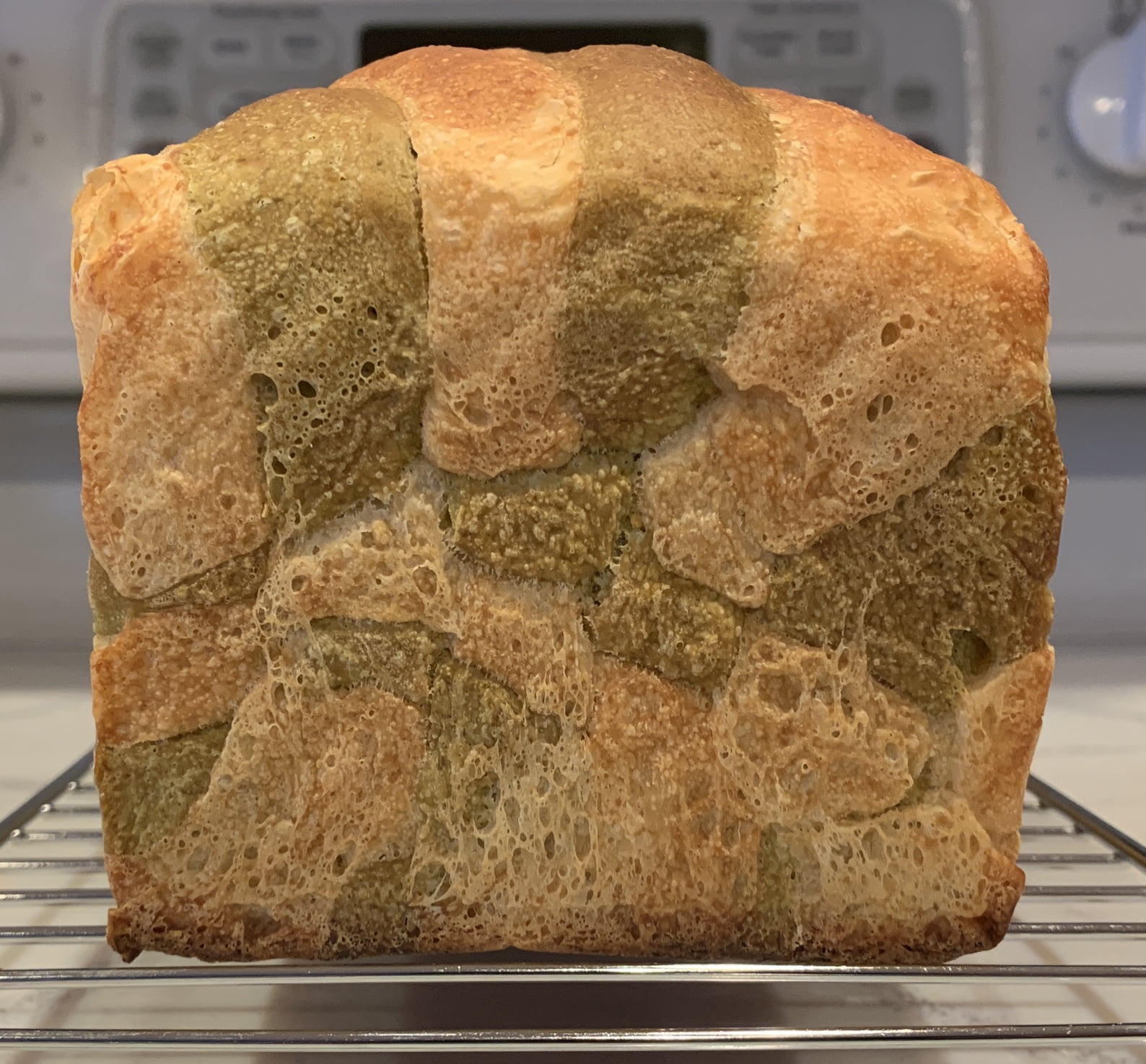It's funny how you walk by something in a store a thousand times and never notice it. I had never heard of matcha until seeing it in Benny's and Kristi's bakes. Looking for some tea at the store and there it was. Had probably been there all along. So, I decided to get some and come up with a bake for it.
I've been using ginger root in some of my cooking and wanted to try it here. Decided to make a porridge with jasmine rice, honey, and the ginger root. Added the matcha powder to half the loaf and made this checker board pattern. The basis for this bread recipe is a combination of Hamelman's Rice Bread and Danni's porridge breads.
The night before (12-16 hours prior to Final Mix)
Pate Fermente
72g AP flour
48g Bread flour
72g water
2.4g salt
0.2g ADY
Combine all ingredients and mix until just smooth. Ferment at ~70 deg F.
Porridge
40g jasmine rice (mill to coarse flour if you can to reduce cooking time)
6g minced fresh ginger root
20g honey
80g whole milk
Combine all ingredients in pot and cover. Cook on low heat stirring regularly until creamy. Acidity of the ginger root will cause the milk to separate. Keep stirring occasionally until all the free liquid is absorbed. Refrigerate overnight.
Day Of
168g AP flour (divided)
112g Bread flour (divided)
168g water (divided)
5.6g salt (divided)
6g ADY (divided)
1.5 tsp matcha powder
Remove porridge from refrigerator and divide in two halves and add the matcha powder to one of the halves. Divide the pate fermente in equal halves. Divide all final mix ingredients in half.
For each half, combine the ADY with the water. Combine all dry ingredients. Add the water/ADY mixture and the porridge to the dry ingredients and start to mix. Break up the pate fermente into small chunks and add it to the mixture. Continue mixing and focus on breaking up the pate fermente chunks. Fermentolyse 15-20 minutes. Perform 4 sets of bowl kneading to incorporate the pate fermente and develop full gluten. Bulk ferment for 1-2 hours until dough has doubled in size.
Roll out dough into a 18-19cm wide by 30cm long rectangle. Flour each side well to avoid sticking to the counter. After rolling, slice each dough in 2cm wide strips and alternate placing them on parchment paper building a checkerboard pattern that's 5 strips wide. Lightly mist each layer when built to make sure the next layer sticks to it. When complete, lower the loaf into a pan using the parchment paper as a sling. When in the pan, lightly press the dough to spread it into the pan and make sure the loaf is solid.




Allow the dough to roughly double in the loaf pan and then bake. Pre-heat oven to 400 deg F. Add 1/2 cup boiling water to steam pan on bottom oven rack. Bake for 7 minutes at 400 deg F and 8 minutes at 375 deg F. Vent oven and remove steam pan. Lower to 350 deg F and bake for 15 minutes. Remove loaf from pan and take off parchment paper. Bake directly on the center oven rack for 5 minutes at 350 deg F to set the crust.


Should have waited till tomorrow morning before slicing, but I got impatient!

Crumb looks nice and custardy. Will be having this with fried eggs for breakfast in the morning. It has a very nice aroma from both the jasmine rice and the ginger root. However, the aroma is unlike anything I've experienced before. Curious how this one will be.
In case you're looking for gift ideas and haven't seen them before... My wife got me an early Christmas gift, and this bow knife is pretty slick. You can slice a soft bread very thin and precisely without deforming the loaf.

